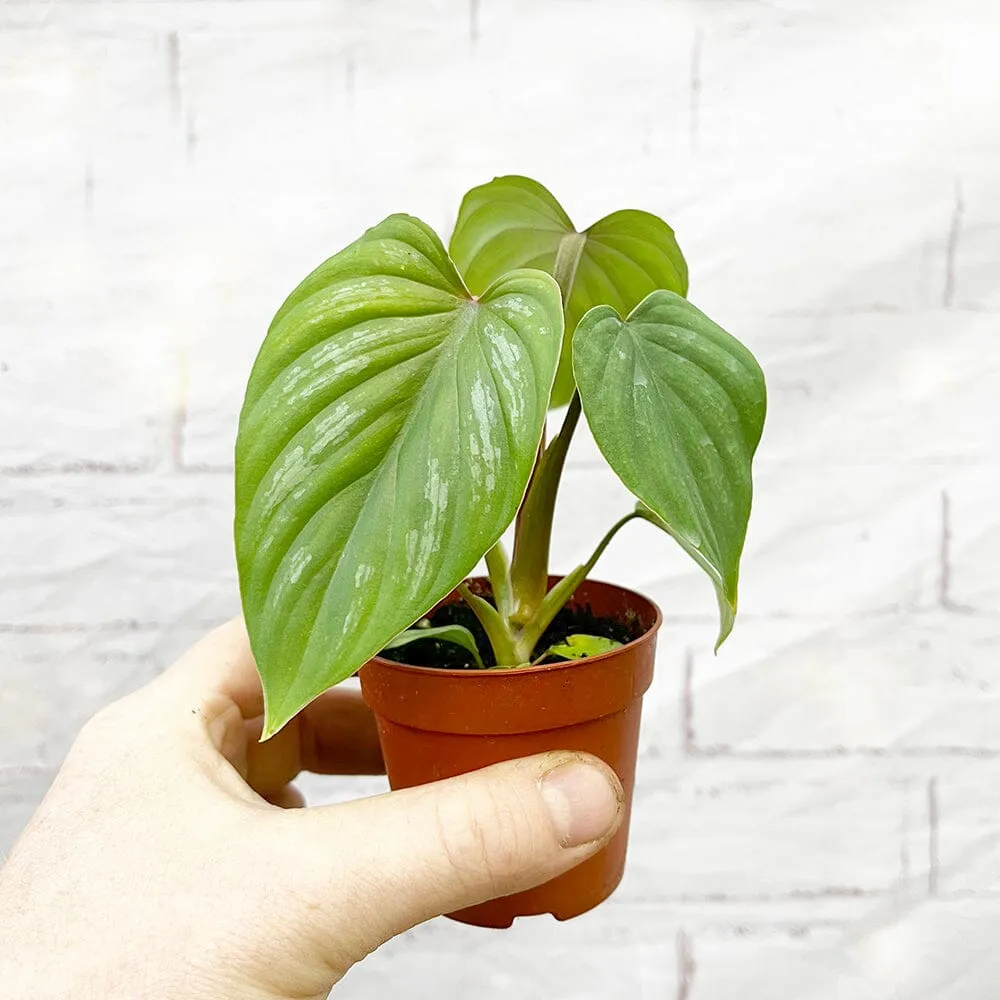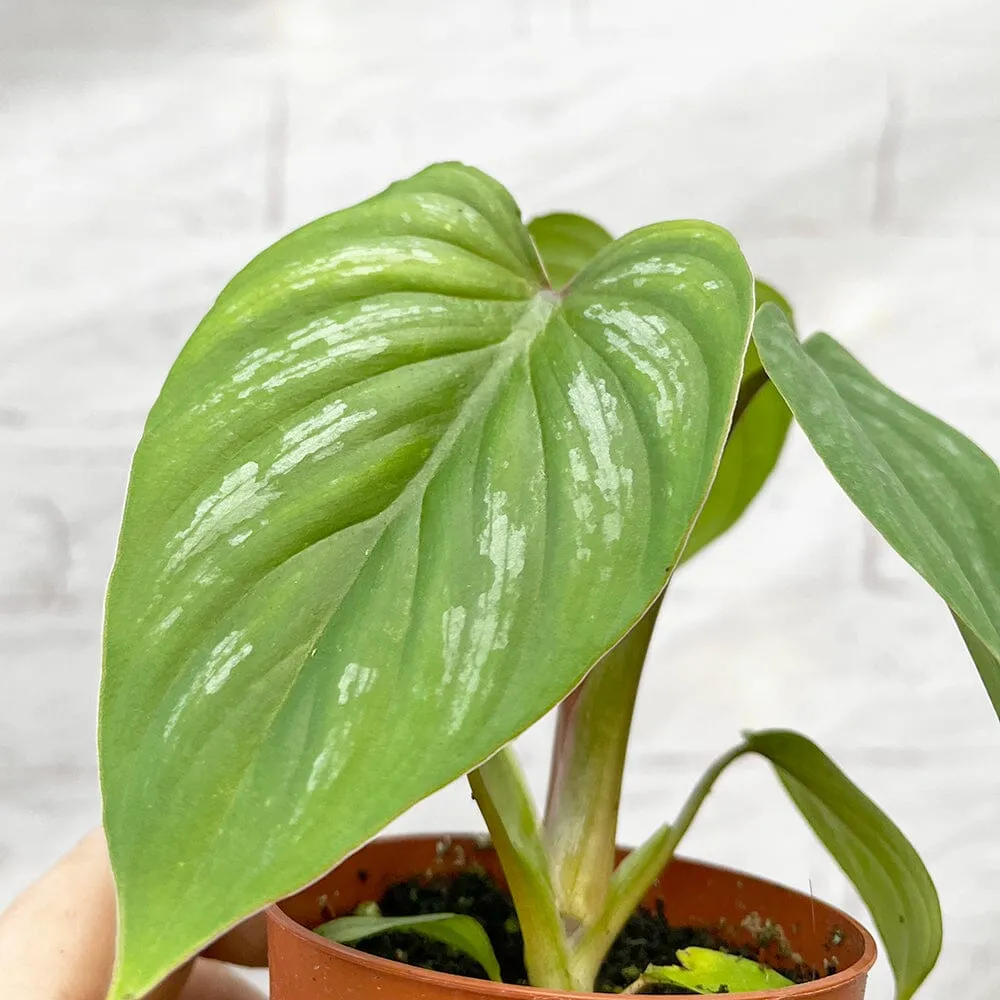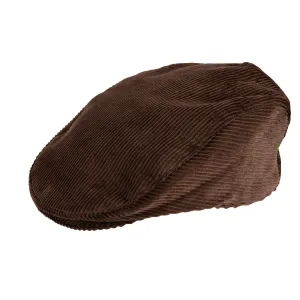Philodendron mamei is a stunning tropical plant known for its large, heart-shaped leaves adorned with silver variegations. Native to the rainforests of Ecuador, this Philodendron species is a terrestrial plant, unlike many of its epiphytic relatives. Here's a guide to help you care for your Philodendron mamei:
Description:
Leaves: Large, heart-shaped, and velvety to the touch. They sport random patterns of silvery variegations.
Growth Habit: This is a crawling Philodendron, which means it will spread out over the ground, but it can also be trained to grow upward with support.
Care Guide:
Light: Philodendron mamei prefers bright, indirect light. Direct sunlight can damage its delicate, velvety leaves, so ensure it's placed in a location with filtered or diffused light.
Water: This plant likes consistently moist soil but not waterlogged conditions. Water when the top inch or so of the soil feels dry to the touch. Overwatering can lead to root rot.
Soil: Use a well-draining, aerated potting mix. Many enthusiasts prefer a mix of potting soil, perlite, and orchid bark or coco coir. This helps ensure good oxygen flow to the roots and prevents over-saturation.
Temperature: It thrives in temperatures between 65°F (18°C) and 80°F (27°C). Protect your Philodendron mamei from cold drafts and temperatures below 60°F (15°C).
Humidity: Philodendron mamei enjoys higher humidity levels. If your indoor environment is dry, consider increasing the humidity around the plant by misting, using a humidity tray, or investing in a humidifier.
Fertilization: Feed it every 4-6 weeks during the growing season (spring and summer) with a balanced liquid fertilizer diluted to half the recommended strength. Reduce feeding in the fall and winter when the plant's growth slows down.
Pruning: Pruning can help maintain its shape and encourage bushier growth. Remove any yellow or unhealthy-looking leaves to keep the plant looking its best.
Propagation: Philodendron mamei can be propagated from stem cuttings. Make sure the cutting has at least 2-3 nodes, then place it in water or directly into the soil. If rooting in water, transfer to soil once roots appear.
Pests and Diseases: Look out for common indoor plant pests like spider mites, mealybugs, and aphids. In case of an infestation, use insecticidal soap or neem oil. Ensure you don't overwater to avoid root rot.
Final Notes:
Philodendron mamei is a beautiful specimen that can be a showstopper in any indoor plant collection. Its velvety leaves and silver variegations are its main attractions. Regular care, monitoring, and providing the right environmental conditions will ensure that your plant thrives. Remember that Philodendrons, including P. mamei, are toxic if ingested, so it's crucial to keep them out of reach of pets and children.













